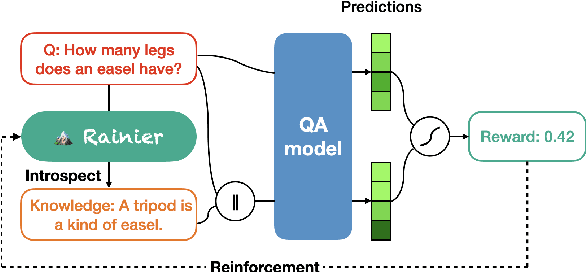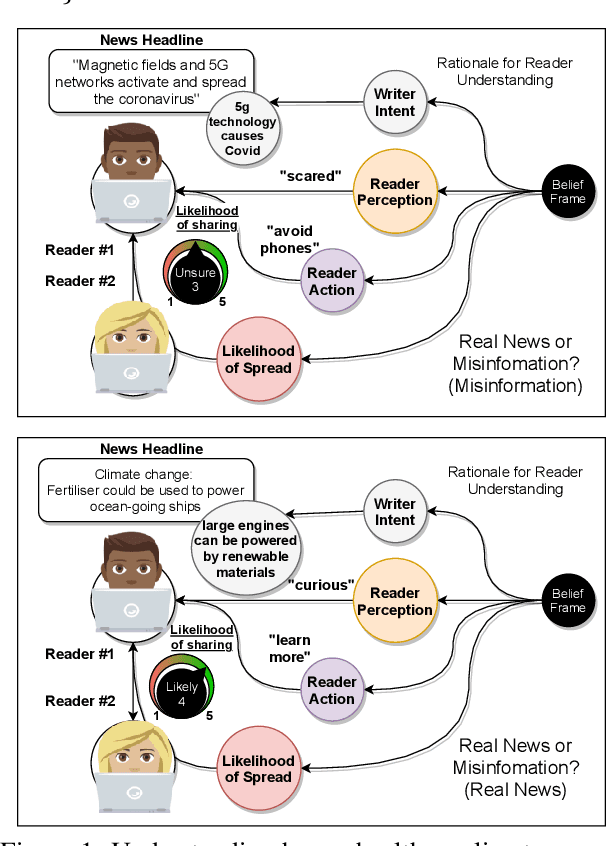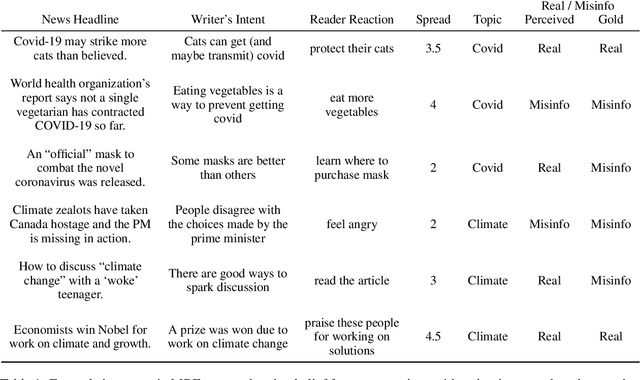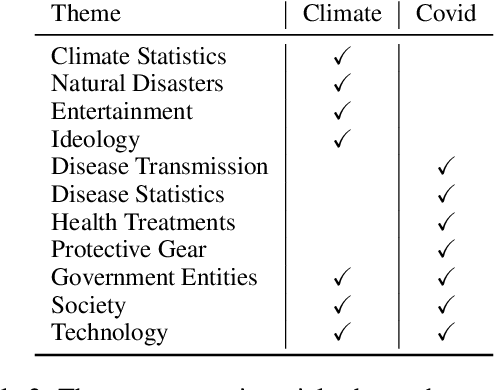Skyler Hallinan
AI as Humanity's Salieri: Quantifying Linguistic Creativity of Language Models via Systematic Attribution of Machine Text against Web Text
Oct 05, 2024Abstract:Creativity has long been considered one of the most difficult aspect of human intelligence for AI to mimic. However, the rise of Large Language Models (LLMs), like ChatGPT, has raised questions about whether AI can match or even surpass human creativity. We present CREATIVITY INDEX as the first step to quantify the linguistic creativity of a text by reconstructing it from existing text snippets on the web. CREATIVITY INDEX is motivated by the hypothesis that the seemingly remarkable creativity of LLMs may be attributable in large part to the creativity of human-written texts on the web. To compute CREATIVITY INDEX efficiently, we introduce DJ SEARCH, a novel dynamic programming algorithm that can search verbatim and near-verbatim matches of text snippets from a given document against the web. Experiments reveal that the CREATIVITY INDEX of professional human authors is on average 66.2% higher than that of LLMs, and that alignment reduces the CREATIVITY INDEX of LLMs by an average of 30.1%. In addition, we find that distinguished authors like Hemingway exhibit measurably higher CREATIVITY INDEX compared to other human writers. Finally, we demonstrate that CREATIVITY INDEX can be used as a surprisingly effective criterion for zero-shot machine text detection, surpassing the strongest existing zero-shot system, DetectGPT, by a significant margin of 30.2%, and even outperforming the strongest supervised system, GhostBuster, in five out of six domains.
StyleRemix: Interpretable Authorship Obfuscation via Distillation and Perturbation of Style Elements
Aug 28, 2024



Abstract:Authorship obfuscation, rewriting a text to intentionally obscure the identity of the author, is an important but challenging task. Current methods using large language models (LLMs) lack interpretability and controllability, often ignoring author-specific stylistic features, resulting in less robust performance overall. To address this, we develop StyleRemix, an adaptive and interpretable obfuscation method that perturbs specific, fine-grained style elements of the original input text. StyleRemix uses pre-trained Low Rank Adaptation (LoRA) modules to rewrite an input specifically along various stylistic axes (e.g., formality and length) while maintaining low computational cost. StyleRemix outperforms state-of-the-art baselines and much larger LLMs in a variety of domains as assessed by both automatic and human evaluation. Additionally, we release AuthorMix, a large set of 30K high-quality, long-form texts from a diverse set of 14 authors and 4 domains, and DiSC, a parallel corpus of 1,500 texts spanning seven style axes in 16 unique directions
STEER: Unified Style Transfer with Expert Reinforcement
Nov 13, 2023



Abstract:While text style transfer has many applications across natural language processing, the core premise of transferring from a single source style is unrealistic in a real-world setting. In this work, we focus on arbitrary style transfer: rewriting a text from an arbitrary, unknown style to a target style. We propose STEER: Unified Style Transfer with Expert Reinforcement, a unified frame-work developed to overcome the challenge of limited parallel data for style transfer. STEER involves automatically generating a corpus of style-transfer pairs using a product of experts during decoding. The generated offline data is then used to pre-train an initial policy before switching to online, off-policy reinforcement learning for further improvements via fine-grained reward signals. STEER is unified and can transfer to multiple target styles from an arbitrary, unknown source style, making it particularly flexible and efficient. Experimental results on a challenging dataset with text from a diverse set of styles demonstrate state-of-the-art results compared to competitive baselines. Remarkably, STEER outperforms the 175B parameter instruction-tuned GPT-3 on overall style transfer quality, despite being 226 times smaller in size. We also show STEER is robust, maintaining its style transfer capabilities on out-of-domain data, and surpassing nearly all baselines across various styles. The success of our method highlights the potential of RL algorithms when augmented with controllable decoding to overcome the challenge of limited data supervision.
Tailoring Self-Rationalizers with Multi-Reward Distillation
Nov 06, 2023Abstract:Large language models (LMs) are capable of generating free-text rationales to aid question answering. However, prior work 1) suggests that useful self-rationalization is emergent only at significant scales (e.g., 175B parameter GPT-3); and 2) focuses largely on downstream performance, ignoring the semantics of the rationales themselves, e.g., are they faithful, true, and helpful for humans? In this work, we enable small-scale LMs (approx. 200x smaller than GPT-3) to generate rationales that not only improve downstream task performance, but are also more plausible, consistent, and diverse, assessed both by automatic and human evaluation. Our method, MaRio (Multi-rewArd RatIOnalization), is a multi-reward conditioned self-rationalization algorithm that optimizes multiple distinct properties like plausibility, diversity and consistency. Results on five difficult question-answering datasets StrategyQA, QuaRel, OpenBookQA, NumerSense and QASC show that not only does MaRio improve task accuracy, but it also improves the self-rationalization quality of small LMs across the aforementioned axes better than a supervised fine-tuning (SFT) baseline. Extensive human evaluations confirm that MaRio rationales are preferred vs. SFT rationales, as well as qualitative improvements in plausibility and consistency.
Inference-Time Policy Adapters (IPA): Tailoring Extreme-Scale LMs without Fine-tuning
May 24, 2023Abstract:Large language models excel at a variety of language tasks when prompted with examples or instructions. Yet controlling these models through prompting alone is limited. Tailoring language models through fine-tuning (e.g., via reinforcement learning) can be effective, but it is expensive and requires model access. We propose Inference-time Policy Adapters (IPA), which efficiently tailors a language model such as GPT-3 without fine-tuning it. IPA guides a large base model during decoding time through a lightweight policy adaptor trained to optimize an arbitrary user objective with reinforcement learning. On five challenging text generation tasks, such as toxicity reduction and open-domain generation, IPA consistently brings significant improvements over off-the-shelf language models. It outperforms competitive baseline methods, sometimes even including expensive fine-tuning. In particular, tailoring GPT-2 with IPA can outperform GPT-3, while tailoring GPT- 3 with IPA brings a major performance boost over GPT-3 (and sometimes even over GPT-4). Our promising results highlight the potential of IPA as a lightweight alternative to tailoring extreme-scale language models.
Self-Refine: Iterative Refinement with Self-Feedback
Mar 30, 2023



Abstract:Like people, LLMs do not always generate the best text for a given generation problem on their first try (e.g., summaries, answers, explanations). Just as people then refine their text, we introduce SELF-REFINE, a framework for similarly improving initial outputs from LLMs through iterative feedback and refinement. The main idea is to generate an output using an LLM, then allow the same model to provide multi-aspect feedback for its own output; finally, the same model refines its previously generated output given its own feedback. Unlike earlier work, our iterative refinement framework does not require supervised training data or reinforcement learning, and works with a single LLM. We experiment with 7 diverse tasks, ranging from review rewriting to math reasoning, demonstrating that our approach outperforms direct generation. In all tasks, outputs generated with SELF-REFINE are preferred by humans and by automated metrics over those generated directly with GPT-3.5 and GPT-4, improving on average by absolute 20% across tasks.
Detoxifying Text with MaRCo: Controllable Revision with Experts and Anti-Experts
Dec 20, 2022Abstract:Text detoxification has the potential to mitigate the harms of toxicity by rephrasing text to remove offensive meaning, but subtle toxicity remains challenging to tackle. We introduce MaRCo, a detoxification algorithm that combines controllable generation and text rewriting methods using a Product of Experts with autoencoder language models (LMs). MaRCo uses likelihoods under a non-toxic LM (expert) and a toxic LM (anti-expert) to find candidate words to mask and potentially replace. We evaluate our method on several subtle toxicity and microaggressions datasets, and show that it not only outperforms baselines on automatic metrics, but MaRCo's rewrites are preferred 2.1 $\times$ more in human evaluation. Its applicability to instances of subtle toxicity is especially promising, demonstrating a path forward for addressing increasingly elusive online hate.
Rainier: Reinforced Knowledge Introspector for Commonsense Question Answering
Oct 06, 2022



Abstract:Knowledge underpins reasoning. Recent research demonstrates that when relevant knowledge is provided as additional context to commonsense question answering (QA), it can substantially enhance the performance even on top of state-of-the-art. The fundamental challenge is where and how to find such knowledge that is high quality and on point with respect to the question; knowledge retrieved from knowledge bases are incomplete and knowledge generated from language models are inconsistent. We present Rainier, or Reinforced Knowledge Introspector, that learns to generate contextually relevant knowledge in response to given questions. Our approach starts by imitating knowledge generated by GPT-3, then learns to generate its own knowledge via reinforcement learning where rewards are shaped based on the increased performance on the resulting question answering. Rainier demonstrates substantial and consistent performance gains when tested over 9 different commonsense benchmarks: including 5 in-domain benchmarks that are seen during reinforcement learning, as well as 4 out-of-domain benchmarks that are kept unseen. Our work is the first to report that knowledge generated by models that are orders of magnitude smaller than GPT-3, even without direct supervision on the knowledge itself, can exceed the quality of knowledge elicited from GPT-3 for commonsense QA.
Misinfo Belief Frames: A Case Study on Covid & Climate News
Apr 18, 2021



Abstract:Prior beliefs of readers impact the way in which they project meaning onto news headlines. These beliefs can influence their perception of news reliability, as well as their reaction to news, and their likelihood of spreading the misinformation through social networks. However, most prior work focuses on fact-checking veracity of news or stylometry rather than measuring impact of misinformation. We propose Misinfo Belief Frames, a formalism for understanding how readers perceive the reliability of news and the impact of misinformation. We also introduce the Misinfo Belief Frames (MBF) corpus, a dataset of 66k inferences over 23.5k headlines. Misinformation frames use commonsense reasoning to uncover implications of real and fake news headlines focused on global crises: the Covid-19 pandemic and climate change. Our results using large-scale language modeling to predict misinformation frames show that machine-generated inferences can influence readers' trust in news headlines (readers' trust in news headlines was affected in 29.3% of cases). This demonstrates the potential effectiveness of using generated frames to counter misinformation.
 Add to Chrome
Add to Chrome Add to Firefox
Add to Firefox Add to Edge
Add to Edge